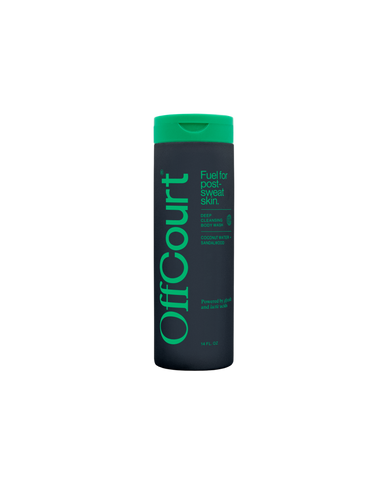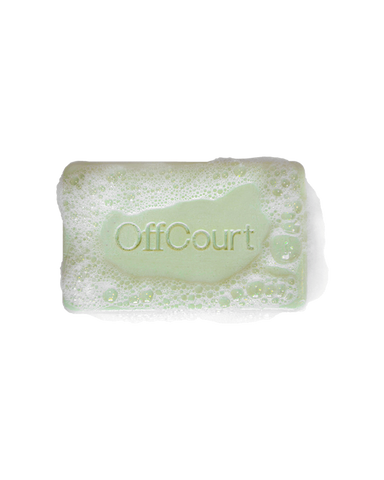How to Exfoliate Your Skin Safely & Effectively
You’re probably familiar with exfoliation: it’s often touted as a skincare solution that can treat anything from fine lines to acne and sun damage. But like all good things, it’s important to know how to do it right to avoid any mishaps.
Let’s dive into what exfoliation is, and how to exfoliate your face and body safely. From there, you’ll be equipped to create a routine that makes perfect sense for your skin.
Why Should You Exfoliate Your Skin?
But first, what does exfoliating do? Whether you go for chemical or physical methods, exfoliating always removes dead skin cells and grime from the outer layer of your skin.
The overall goal of exfoliation is to clear out your pores and reveal your fresh, new skin. It also can help you absorb skincare products better, and take part in your post-workout routine removing sweat and dirt from your skin’s surface.
While just about anyone can benefit from exfoliation if done properly, some skin types, like acne-prone skin, may need it more often to remove excess sebum. Overall, it’s important to consider your skin type before choosing a method.
How to Safely Exfoliate at Home?
Exfoliation is one of the best ways to improve your skin’s texture and tone, but it’s easy to overdo it or use the wrong method for your skin type. Here are some tips to keep in mind:
- Consider the skin care products you already use. Take a moment to think about the skin care products you currently use. If you’re using medications or products with active ingredients, they might make your skin more sensitive to exfoliation.
- Select an exfoliation method that suits your skin type. Not all skin types are the same. If you have dry or sensitive skin, a gentle chemical exfoliator might be best. Oily skin? You can usually handle stronger products. The key is to find what works for you.
- Be gentle to your skin. No matter what method you’re using, it’s essential to be gentle. Never exfoliate over open cuts, wounds, or sunburned skin.
- Follow with moisturizer. Exfoliating can dry out your skin, so always follow up with a good moisturizer to help restore moisture and protect your skin barrier.
- Find the right schedule for you. Start slow! Try exfoliating once or twice a week and see how your skin responds. How often should you exfoliate your body and face? It depends on your skin type and exfoliation method. Generally, the more aggressive the exfoliation, the less often it needs to be done.
What is Chemical Exfoliation?
There are two main methods for at-home exfoliation — chemical and physical— and your choice should depend on what your unique skin type needs.
Chemical exfoliation uses ingredients like alpha-hydroxy acids (AHAs), beta-hydroxy acids (BHAs), or enzymes that work their magic to break down dead skin cells.
You might have heard of the popular ingredients- glycolic acid, lactic acid, salicylic acid, and retinols. AHAs (like glycolic and lactic acids) work on your skin's surface to gently peel away dead skin cells. Meanwhile, BHAs (like salicylic acid) go deeper into your pores, making them great for acne-prone skin.
What is Physical Exfoliation?
Physical exfoliation, or manual exfoliation, involves using a tool or scrub to remove dead skin cells. It’s effective, but it’s important to be gentle to avoid irritation.
Common physical exfoliants include brushes, sponges, gloves, and scrubs with small particles like salt, sugar, or coffee grounds. While physical exfoliation can be a bit more taxing on the skin compared to its chemical counterpart, it's a great option when you need some extra help.
How to Exfoliate Your Face
If your face is looking a bit dull or congested, it’s probably time for a good exfoliation. Let’s break it down by method:
Using Chemical Exfoliants
- Cleanse: Start by washing your face with your usual cleanser. Use lukewarm water to rinse off; hot water can be too harsh.
- Apply: If your chemical exfoliant is a pre-moistened cloth, pad, gel, or serum, apply it all over your face, neck, décolleté, and even the tops of your hands. Give it a few minutes to soak and works its magic.
- Moisturize: Don’t forget this step! Exfoliating can dry out your skin, so follow up with a good face moisturizer to keep your skin hydrated and protected. You can use a treatment serum, cream, or both.
Using Physical Exfoliants
- Cleanse: Start by washing your face with your usual cleanser. Again, lukewarm water is the way to go.
- Apply: Take a quarter-sized amount of your face scrub and gently apply it in circular motions, avoiding the eye area. Massage it in for as long as your product recommends.
- Rinse: Rinse off with warm water and gently pat your face dry with a clean towel.
- Moisturize: This is crucial! Physical exfoliants can be drying, so always follow up with a moisturizer to keep your skin hydrated. You can use a treatment serum, cream, or even a hydrating mask.
How to Exfoliate Your Body
Exfoliating your body is very similar to exfoliating your face. But because the skin on the body tends to be less delicate than facial skin, it can usually withstand some heavier-duty exfoliators.
Still, the general process for exfoliating the body is the same as the face:
- Cleanse: Choose an exfoliating body wash or body soap to combine exfoliation and cleansing. OffCourt’s Exfoliating Body Soap is the perfect choice for exfoliating, hydrating, and nourishing skin as you cleanse. Its medium-grit formula banishes dead skin, bacteria, and sweat, while shea butter and olive oil replenish vital nutrients. For a gentler option, try OffCourt’s Deep Cleansing Body Wash, which features glycolic and lactic acids that deeply penetrate pores to clear out dirt and oil. These powerful yet skin-friendly exfoliants help dissolve built-up grime to leave your skin clear and soft.
- Exfoliate: If you haven’t already used an exfoliating soap, now’s the time to hit your skin with your favorite mechanical or chemical exfoliator. If you’ve already scrubbed away dead skin while cleansing, take the opportunity to use a washcloth to gently remove suds from your skin.
- Moisturize: Follow your shower with a moisturizer to seal in hydration and soothe your skin.

Deep Cleansing Body Wash - Coconut Water + Sandalwood
How to Exfoliate Bikini Area
You can exfoliate your bikini area with a gentle product like OffCourt’s Exfoliating Soap, which is designed to remove sweat and dirt that might cause pore clogs. Remember, less is more in sensitive spots to avoid any unwanted irritation.
How to Exfoliate Feet
Because the skin on the feet can get very rough, dry, and thick, it’s best to opt for physical exfoliants rather than chemical products. A foot brush or callus-removing brush that can physically remove built-up dead skin should do the trick. You can also use an exfoliating soap to scrub especially tough areas and keep your new skin soft and healthy over time.

Exfoliating Body Soap - Fig Leaves + White Musk
Final Thoughts
Exfoliating is a simple process that can make a massive difference, but it’s important to be careful and mindful as you use it. Start slow, always be gentle, and listen to your skin to find a routine that works for you.
No matter what yours looks like, you can count on OffCourt to deliver products to help you toward your goals. Check out our full range of products to find out what other skin care solutions fit your needs.
